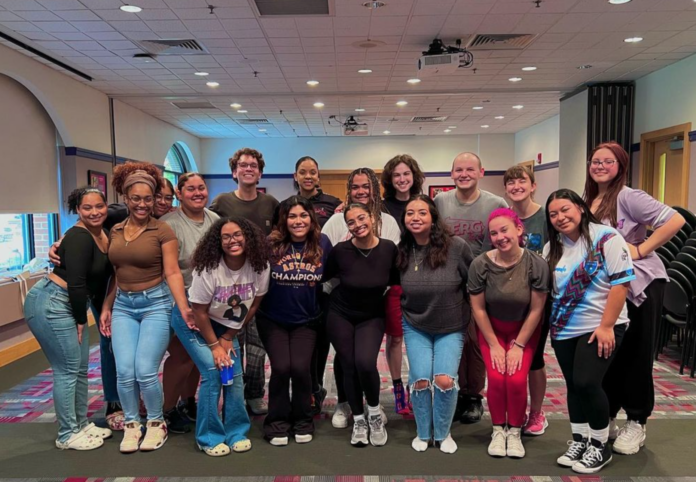
Continuing the month-long celebration of Latine Heritage Month, Wood Dining Commons Executive Chef Mary Martinez created a menu to celebrate cultural dishes from various countries from Central and South America. On Oct. 5, the dining hall served mangu (Dominican mashed plantains), pastelón de carne (meat pie), moro de habichuelas negras (one-pot rice and black beans), ceviche de camarones (shrimp ceviche) and flan de vainilla (vanilla flan). Mangu is a classic Dominican dish that is usually served during breakfast time. Pastelón de carne is both a Dominican and Puerto Rican dish. In the Dominican Republic, mashed plantains are added, and it is cooked in a casserole dish. In Puerto Rico, it is more similar to a lasagna as the plantains are cut lengthwise and layered to strips and fried. Moro de habichuelas is a Latin American dish that is quite simple to make, but extremely flavorful. Ceviche de camarones is most commonly associated with Peru, but dishes similar to it are made around the Pacific coast and elements are added such as sweet potatoes, toasted corn, tomatoes and peanuts. Flan de vainilla is a widely known delicacy in Central and South America.
On Oct. 12, the dining hall served arroz amarillo (yellow rice), habichuelas guisadas (Puerto Rican stewed rice and beans), empanadas de carne (meat empanadas) and bizcocho tres leches (three milk cake). Arroz amarillo has Spanish origins and is made from combining cooked rice with chicken stock, onions, saffron and turmeric to give the rice its lively color. Habichuelas guisadas is from Puerto Rico and it’s a comfort food served with warm rice and made out of sofritos and beans. Empanadas are from Spain and Portugal. The word empanada comes from the Spanish verb “empanar” meaning to wrap or coat in bread. Beef empanadas are the most common variation of empanadas. Bizcocho tres leches is an authentic Mexican cake. The syrup has three types of milk in it and holes are poked into the cake before pouring the syrup to make it extra moist.
“I really appreciate the dining hall making all of these cultural dishes, especially the Dominican dishes like mangu and pastelón! It was really nice to eat the food I would usually have at home.”
Keanna Peña ’25
Keanna Peña ‘25 said, “I really appreciate the dining hall making all of these cultural dishes, especially the Dominican dishes like mangu and pastelón! It was really nice to eat the food I would usually have at home.”
On Oct. 6, Comunidad and Women of Color Collective (WCC) collaborated to bring in Ely Dance Studio, the first Latin dance studio in the Lehigh Valley, to teach bachata lessons to the Muhlenberg community. This romantic style of dance originated from the 1960s in the Dominican Republic and combines three different dance styles that has now developed into a more electronic and modern dance style.
“At our Charlamos Event we talked about elections, what Comunidad members want to see more of, and the outcome of Latine Heritage Month!”
Adrián Padrón-Curet ‘26
Comunidad commemorated the last few days of Latine Heritage Month with their ‘Charlamos” or “We Chat” event. At the Charlamos event, participants ate nachos and were able to chat with each other about what Latine Heritage month means to them. Secretary of Comunidad, Adrián Padrón-Curet ‘26, said that “At our Charlamos Event we talked about elections, what Comunidad members want to see more of, and the outcome of Latine Heritage Month!”
Shaiyan Feisal '26 is a neuroscience major with a minor in public health. She enjoys writing news and arts & culture pieces to highlight the various voices among the student body and show the variety of commodities Muhlenberg has to offer. When she isn't writing, she enjoys reading murder mystery novels and painting.






















